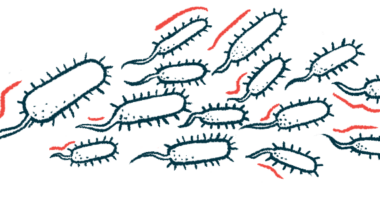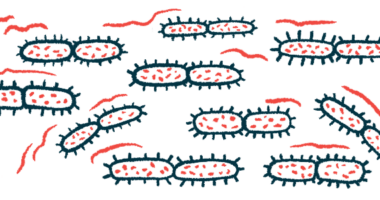P. aeruginosa in Infancy Tied to Poor Lung Function by Preschool Age

Infants with cystic fibrosis (CF) who are infected with Pseudomonas aeruginosa in their first six months are at heightened risk of having impaired lung function by the time they are preschool age, a new study reports.
The study also showed that lung function measurements and CT scan imaging in infancy could help to predict the risk of lung function abnormalities later in childhood.
These findings may be helpful for identifying children with CF who are most likely to benefit from early, intensive treatment, according to researchers.
The study, “Early Pseudomonas aeruginosa predicts poorer pulmonary function in preschool children with cystic fibrosis,” was published in the Journal of Cystic Fibrosis.
The London Cystic Fibrosis Collaboration (LCFC) is following long-term outcomes for a group of children who were diagnosed with CF at birth via newborn screening, alongside a group of children without CF (controls).
In a prior study, the researchers reported on lung function data for 96 children with CF and 62 healthy controls, from ages 3 months to 2 years. Results showed that despite a deficit at 3 months of age, lung function was generally similar comparing the two groups.
Now, the scientists assessed lung function in some of the same children — specifically, 67 with CF and 41 controls — when they were about preschool age, between the ages of 3 and 6. The main measures used to assess lung function were lung clearance index (LCI) and forced expired volume (FEV). Both tests are noninvasive assessments. FEV specifically measures how much air a person can exhale during a forced breath.
“The aims of this study were to (a) determine whether children … maintained near normal lung function at preschool age, and (b) to identify factors measured in infancy (up to 2 years of age) that could predict lung function abnormality at preschool age,” the team wrote.
Results showed abnormal FEV scores in 11% of the children with CF, while abnormal LCI scores were seen in 39% of children in the same group.
“We previously demonstrated that this [diagnosed by newborn screening] LCFC cohort maintained near normal lung function until 2 years … We have now demonstrated a significant deterioration of lung function by preschool age,” the scientists wrote.
They then conducted a series of statistical analyses to look for factors during infancy that could be used to predict the risk of lung function impairment by early childhood.
“Specifically, we wished to examine predictors that could be obtained by routine clinical monitoring early in life, that give insight into development of early CF lung disease,” the team wrote.
The strongest predictor of abnormal LCI scores at preschool age was found for children who had Pseudomonas aeruginosa infections as infants, specifically in the first six months of life, the results showed.
These children had tested positive for P. aeruginosa, a chief agent in bacterial lung infections in CF, before age 6 months. Notably, testing positive for Pseudomonas between ages 6 months and 2 years was not associated with worsened lung function by preschool age.
This suggests “a particularly detrimental effect of [Pseudomonas] on the early developing lung,” the researchers wrote.
Analyses also indicated that infants who showed small abnormalities in LCI during infancy were at increased risk of having more pronounced lung function defects later on. Including lung imaging data obtained via CT scan could also help to predict the risk of worsened lung function in statistical analyses.
“Minor abnormalities of LCI and CT during infancy are also associated with future lung function decline,” the researchers wrote.
These findings “may be helpful in identifying children who will benefit from intensified therapy,” the scientists concluded. “Our data suggest that this should start before 2 years of age, and that we should not be complacent about the relatively minor changes in the 2-year data, or CT abnormalities at 1 year.”








